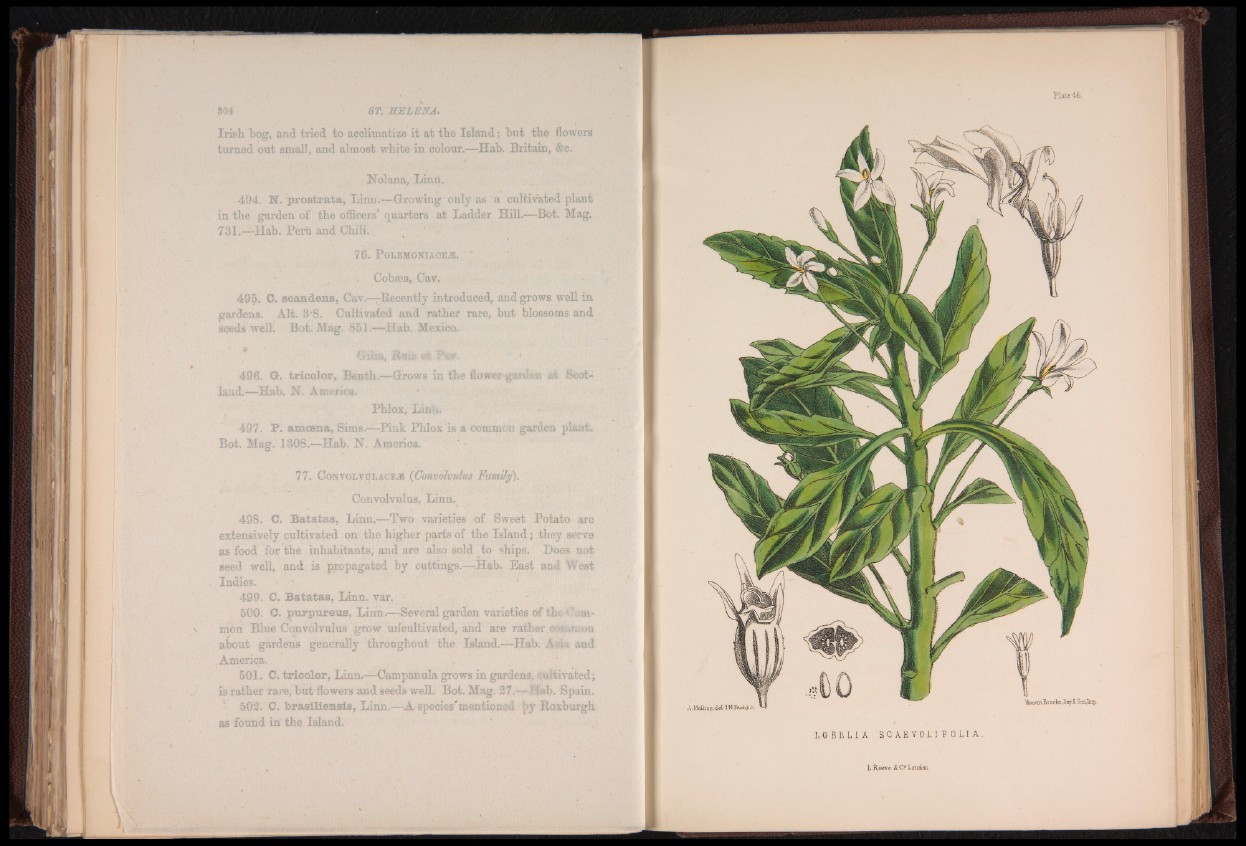
Irish bog, and tried to acclimatize it at the Island; but the flowers
turned out small, and almost white in colour.—Hab. Britain, &c.
Nolana, Lind.
494. IF. prostrata, Linn.—Growing only as a cultivated plant
in the garden of the officers’ quarters at Ladder Hill.—Bot. Mag..
731.—Hab. Peru and Chili. ' ■
7 6 . P o L EM O N IA C E A . ‘
, \ Cobsea, Cav.
495. C. scandens, Cav.—Recently introduced, and grows well in
gardens. Alt. S'8. Cultivated and rather rare, but blossoms and
seeds well. Bot. Mag. 851.—Hab. Mexico.
Gilia, liaiz 5a| Iter. t ,
496. G. tricolor, Benth.—Grows in the flower-garden at Scotland.—
Hab. U. America,
Phlox, Lin'u.
497. P. amoena, Sims.—Pink Phlox is a common garden plant.
Bot. Mag. 1308.—Hab. if. America.
7 7 . C onvolvulácea (Convolvulus. Family).
Convolvulus, Linn.
498. C. Batatas, Linn.—Two varieties of Sweet Potato are
extensively cultivated on the higher parts of the Island; they serve
as food for the inhabitants, and are also sold to ships. Does not
seed well, and is propagated by cuttings.—Hab. East and West
Indies.
499. C. Batatas, Linn. var.
500. 0. p u rp u re a s, Linn.—Several garden varieties of the Common
Blue Convolvulus .grow uncultivated, and áre rather.Cfiwmon
about gardens generally throughout the. Island.—Hab. Asia and
America.
501. C. tricolor, Linn.—Campanula grows in gardens, cultivated;
is rather rare, but flowers and seeds well. Bot. Mag. 27.—Hab. Spain.
" 502. C. brasiliensis, Linn.—A species'mentioned by Roxburgh
as found in the Island.
VbcentBrooks.Day£ Sonjmp.
.MelliSS.del I ■HBtch.ik